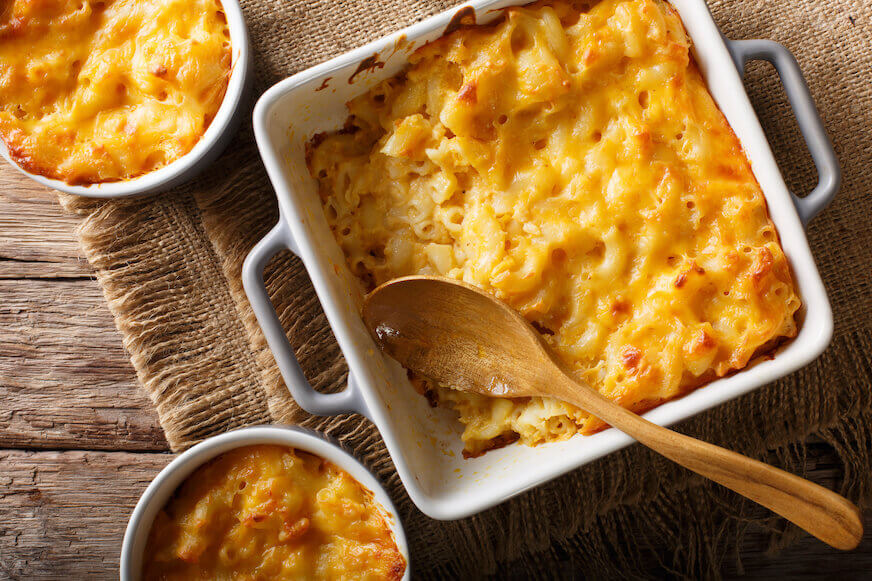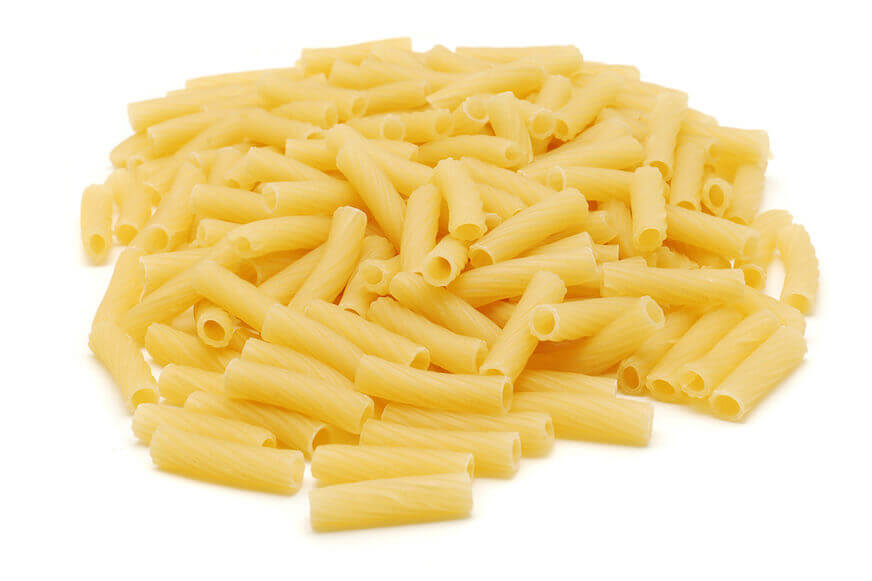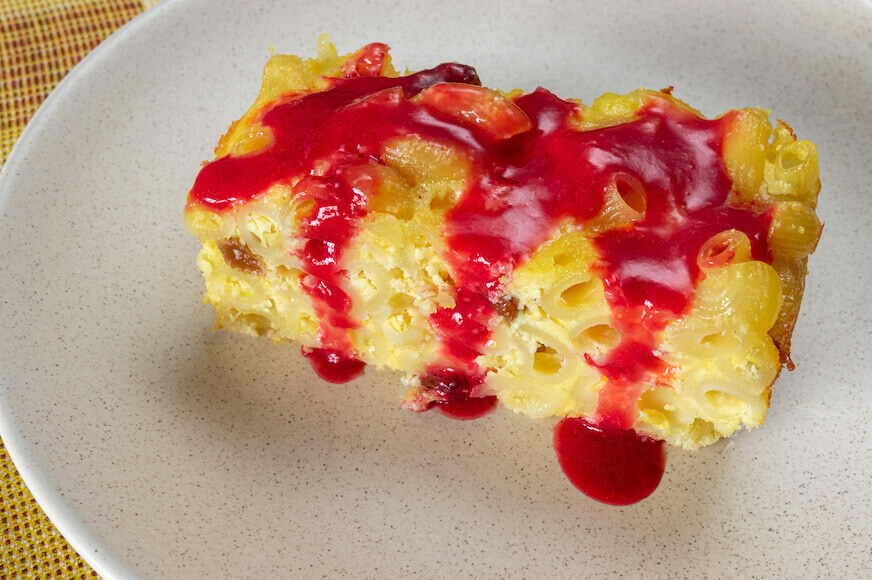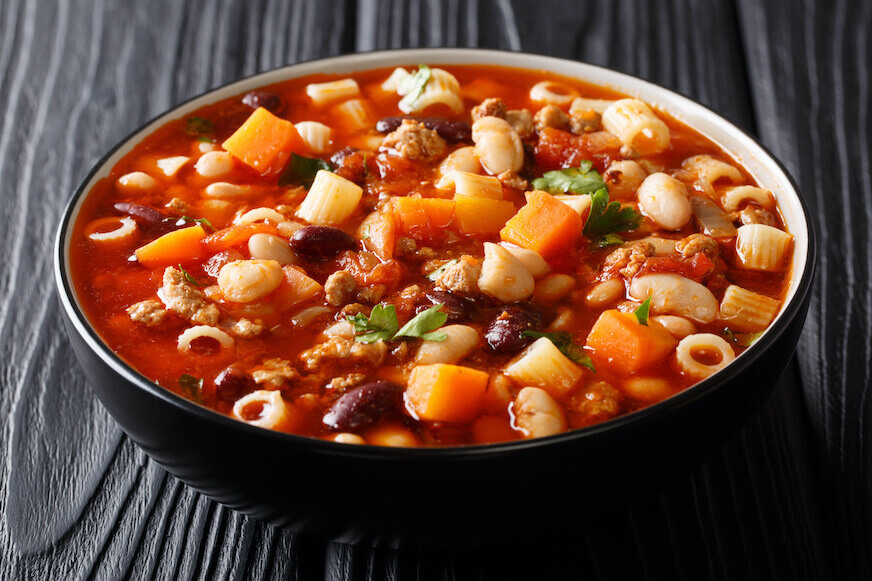

When you think about macaroni, you might head in a number of directions. Perhaps you think of a school lunch or a toddler’s favorite meal served from a box with powdered cheese. Maybe you think of a silly nursery rhyme that starts with “Yankee Doodle went to town, riding on a pony.”
Or maybe you’ve doctored up this u-shaped pasta with meat and spices, made it in a soup, or argued with strangers online over the best way to make a respectable mac and cheese.
Macaroni is a simple pasta steeped in tradition for many families and brimming with potential. Read on to find out more about its history and uses.
As with most foods, macaroni’s exact origins are difficult to pinpoint. One leading theory suggests that the word, if not the pasta itself, came from the Greeks when they established the colony of Neapolis (today’s Naples) between 2000 and 1000 B.C.E. and discovered a local dish made of barley that they called macaria, or makaria.
Interestingly, the word comes from a Greek goddess, Makaria, who was the daughter of Hades. Her link to pasta? Apparently, barley dishes were a staple during ancient Greek funerals—which explains how macaroni, then made with barley, became connected to the Greek goddess of a blessed death.
Eventually, makaria evolved into maccheroni, made with durum wheat instead of barley, and then into macaroni. For a long time, “macaroni” meant most any pasta, not the hollow tubes we think of today.
By the early 14th century, macaroni appeared in cookbooks, including Libro de Arte Coquinaria, which included recipes for “maccaroni.”
But it was a Swiss chef in the mid-1400s who took the pasta to a whole new place by bringing in copious amounts of dairy. Martino da Como, also known as Maestro Martino, cooked at the Vatican and for an Italian duke, and he is considered the world’s first celebrity chef. In his cookbook, “Libro de arte coquinaria,” or “The Art of Cooking,” Maestro Martino described making pasta with a tube in the middle and then mixing in butter, cream, and cheese.
Martino’s concoction is conceivably the oldest mac and cheese recipe, or at least the earliest version of what would evolve into mac and cheese. Today, the Swiss version of the dish is called älplermagrone, or Herdsman’s Macaroni, and includes potatoes and onions along with macaroni and cheese.
Fast forward a couple of centuries, and creamy macaroni and cheese became popular in England and France, where Thomas Jefferson discovered it. When Jefferson, then an American ambassador to France, returned to the United States in 1789, he smuggled a pasta machine back so he could continue enjoying the dish.
Back in Philadelphia, Jefferson’s enslaved chef, James Heming, served the dish to Jefferson and his guests, likely incorporating the French style of a white sauce or adding cream and Gruyère cheese.

Macaroni and Cheese is popular around the world.
Although some versions of macaroni and cheese were already floating around the United States, Jefferson is credited with popularizing it and even having it served at the White House after he became president.
Pasta and cheese were both pricy at the time, so macaroni and cheese mainly circulated among wealthy circles. But that scenario flipped when Kraft Foods made its first boxed mac and cheese product in 1937 and marketed it as a “housewife’s best friend.” The company sold 8 million boxes in a single year at 19 cents each. The meal was easy to make and could be whipped up in a single pot. Furthermore, it was invented during a time when dairy was more expensive, so it offered a glimpse of a more expensive food for less.

Macaroni is a tube-shaped pasta, and not always curved.
Macaroni and cheese has firmly established itself in American culture and in a wide array of variations around the world. But it’s not the only way that macaroni pasta is used globally.
Spiced ground beef, creamy bechamel, and layers of a tubular pasta come together for a dish that’s often referred to as a Greek version of lasagna. However, it doesn’t feature the large, flat noodles but macaroni.
In this fragrant dish, macaroni is combined with vegetables like onions, carrots, and peppers along with Indian spices like pav bhaji masala, then topped with cheese. The dish is often referred to as masala macaroni.
Many countries use macaroni in a dessert. Sweet macaroni pudding in the UK calls for baking cooked macaroni in a custard mixture of milk, sugar, eggs, and spices like nutmeg and sometimes adding dried fruits. An Indian dessert uses macaroni in a twist on the traditional rice pudding called kheer; it calls for macaroni cooked in sweetened milk with cardamom, saffron, and garnished with nuts like almonds and pistachios.

Macaroni pudding is a sweet twist on the cheesy dinner we often think of.
Elbow macaroni is used in mac and cheese, macaroni salad, and a number of other dishes. The humble pasta is versatile, as suited for a cheap and inexpensive meal as it is dressed up and made more elegant.
Consider these uses:

Pasta fagioli is an Italian soup featuring macaroni noodles along with meat and vegetables.
Hopefully you’re starting to think about how to get creative with macaroni, which has a surprisingly interesting history and innumerable uses. To find out more about imaginative ways to cook at home, consider online cooking classes, like Pasta Classics or Classic Sauces.
Or, if you want to pursue a culinary education, consider a degree or diploma in culinary or pastry arts. Escoffier offers both on-campus and online options, making it easier for you to find a way to fit school into your life.
TO FIND OUT MORE ABOUT IMPROVING YOUR CULINARY SKILLS, TRY THESE ARTICLES NEXT:
This article was originally published on March 31, 2014 and has since been updated.
The post The Story of Macaroni: A Guide to Its Origins, Variations, and Modern Recipes appeared first on Escoffier Online.